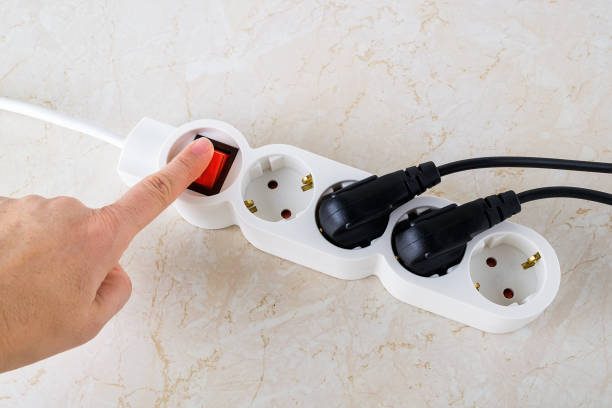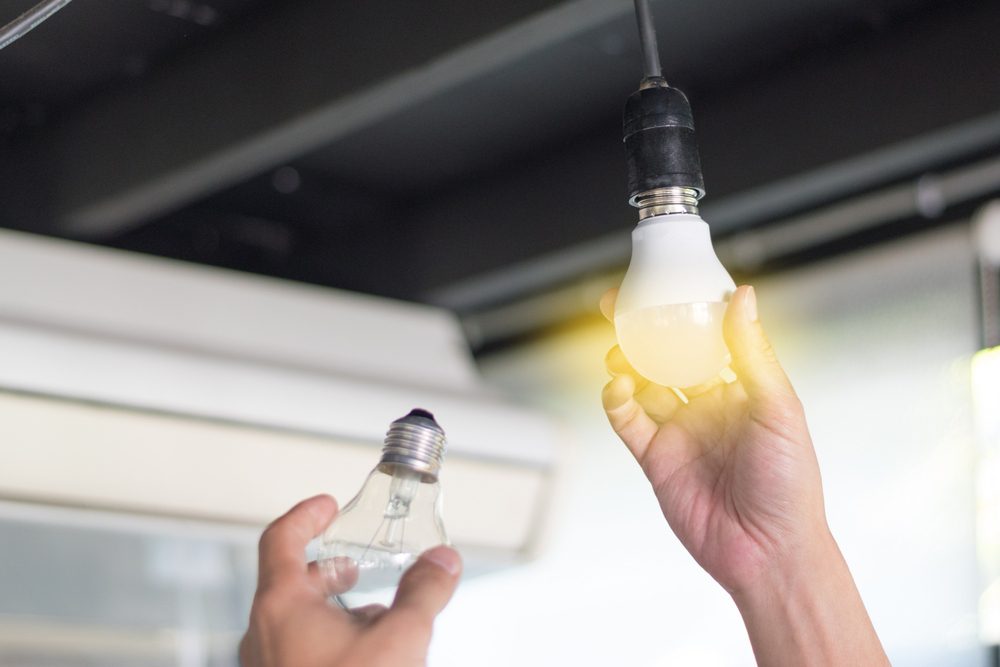
Explore common reasons why LED lights won’t turn on, from faulty wiring and incorrect installations to dead bulbs and power […]

Lighting has come a long way with technological developments moving the lighting industry forward. Incandescent lights have been around longer, but many still confuse them with LED lights, especially if they are not familiar with lighting options.
Unfortunately, businesses and consumers could be making poor decisions based on this lack of knowledge which could lead to a potential cost in energy and money. This article aims to shed more light on this subject.
The choice of lighting should be purpose driven whether it is based on the theme, the cost, the energy spent, or the environmental sustainability implications. We will start by illuminating this important subject and providing energy-efficient and budget-friendly options.

Light emitted:
Incandescent bulbs emit a warm and yellowish light with limited hues while LED light options are available in a wider range of colors such as warm whites, cool whites, and vibrant shades along the color spectrum.
Technological differences:
Incandescent and LED light differ mainly in terms of the technology used and their energy efficiency. Incandescent lights are based on a wire filament that is heated to produce warm yellowish light, while LEDs rely on semiconductor diodes to emit light.
Quality:
LED bulbs use semiconductor diodes that pass electric current through them to emit light. Even though incandescent bulbs have been in the market longer, LED bulbs are better known for their quality. LED lights offer higher brightness, higher energy efficiency, longer lifespan, and more diverse colors.
Color ranges:
In terms of differences, both LED and incandescent lights offer aesthetic ambient light. However, LED lights offer a wider color range, while incandescent light range is limited to a few hues.
Costs:
In terms of cost, LEDs are more cost-effective although their initial cost is higher, while incandescent lights are cheaper to acquire but more expensive in the long run when cost and lifespan are factored in.
Lifespan:
LED bulbs produce brighter lights using less energy compared to incandescent lights. LED bulbs also produce higher quality light compared to incandescent bulbs. Their longer lifespan means less frequent need to change the bulbs regularly.
Flexibility:
While LED lights warm up instantly upon lighting, incandescent lights reach maximum brightness after some warmup. LED bulbs have versatile design flexibility relative to incandescent light.
Potential hazards and accidents:
LED lights require lower operating energy which reduces the risk of overheating considerably. On the other hand, incandescent bulbs are considered riskier, because they produce a higher amount of heat that could cause an accident if they come close to flammable objects.
With less heat being emitted, LED lights reduce the risk of hazards and burns. The other advantage of LED lights is that they don’t contain hazardous material like mercury which was traditionally found in incandescent bulbs.
Adaptability:
Incandescent bulbs rely on high temperatures to emit light which explains why they do not function well in areas with low temperatures. One thing to bear in mind is that incandescent bulbs take a while to warm before reaching maximum brightness during which the filament in the bulbs heats up to produce light.
In cold environments, incandescent bulbs struggle to heat up and therefore reach full brightness which reduces their efficiency in producing light.
On the other hand, LED bulbs function well regardless of the temperature and can even produce quality light at freezing temperatures. LED bulbs are efficient and reach full brightness instantly upon being turned on no matter how low the temperature is outside.
Investment value:
The question when choosing between the two types of bulbs is whether you would rather make a higher initial investment and reap long term benefits or go for the cheaper option and be ready to deal with short term issues. The benefits of investing in energy efficienct LED bulbs become evident when making a long-term comparison.
LEDs not only help save energy and reduce costs, but also repay the initial investment many times over. LED efficiency is estimated at 80 to 90 percent with its technology that minimizes heat generated and light emitted per unit of energy used.
Cost efficiency between LED and incandescent bulbs:
One aspect emphasized in this article is that LED lights are more cost effective. In the following, we can make an estimate of potential savings that result from using LEDs compared to incandescent lights. The initial cost of LED bulbs is twice as high as that of incandescent bulbs.
Even though this makes it tempting to go for incandescent bulbs, there is more to consider. One factor is that LED bulbs have a longer lifespan which can extend up to one and a half years. So, within a year, the LED bulb cost adds to $1.83 while the cumulative cost of an incandescent bulb adds up to $10.95.
Within a 20-year period for a 5-bulb household at 60 watts a bulb, the cumulative cost for incandescent bulb bills reaches $1,000 while the LED bulb cost rises to $100. So, within a 20-year period, one household saves up to 900 dollars by using 5 LED bulbs compared to a house that uses incandescent bulbs.

Energy efficiency and green technology
In addition to their lower overall cost and energy efficiency advantage, LED bulbs also produce clean energy. LEDs are energy efficient since they use less energy and therefore put less demands on natural resources.
Compared to fluorescent bulbs, LED bulbs have eliminated the need for mercury which is flammable and dangerous. Mercury is also expensive and demanding on natural resources. Furthermore, mercury is among the most rampant pollutants, so its elimination using LED lights helps reduce environmental pollution.
Both incandescent bulbs and LED bulbs can be good choices for your lighting needs. The choice of bulb should be informed by the needs and options available to you. However, LED light is a more efficient, and cost-effective alternative.
It is also better for the environment as it reduces pollution and promotes a sustainability. With the detailed discussion on cost implications of each type of bulb, this article has presented you with all you need to choose the most suitable option.